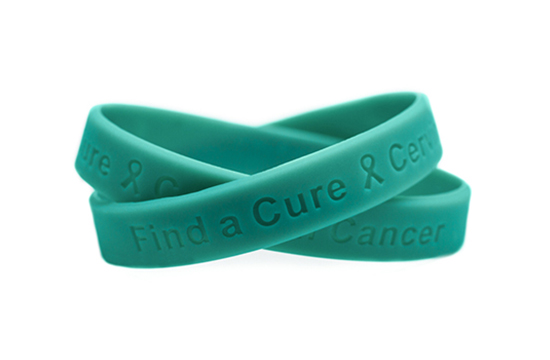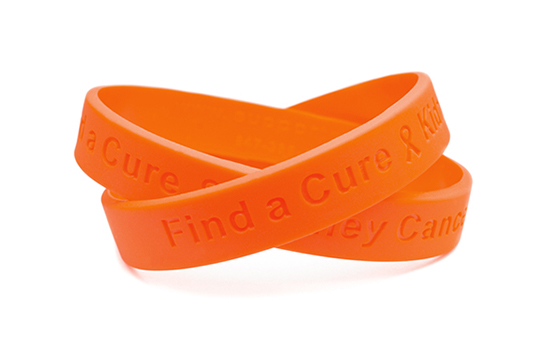Cancer type
All cancers derive from single cells that have acquired the characteristics of continually dividing in an unrestrained manner and invading surrounding tissues. Cancer cells behave in this abnormal manner because of changes in the DNA sequence of key genes, which are known as cancer genes. Major risk factors of cancer are; genetic predisposition, tobacco use, alcohol use, lack of physical activity, environment and improper diet, virus and sun exposure. There are over 100 different known cancers that affect humans. Cancers are often described by the body part that they originated in.

Also known as Bowel Cancer, Colon Cancer or Rectal Cancer, is any cancer (a growth, lump, tumor) of the colon and the rectum. According to WHO (World Health Organization) Colorectal Cancer is the second most common tumor among both men and women (after lung tumors). Approximately 2% of over 50-year-olds will eventually develop colorectal cancer in Western Europe. Colorectal Cancer tends to affect men and women equally. However, men tend to develop it at a younger age. Screening can detect polyps before they become cancerous, as well as detecting colon cancer during its early stages when the chances of a cure are much higher. The most common screening and diagnostic procedures for Colorectal Cancer are Fecal Occult Blood Test (blood stool test), Stool DNA test, Flexible Sigmoidoscopy, Barium Enema X-ray, Colonoscopy, CT colonography (virtual colonoscopy), Ultrasound scan and Magnetic Resonance Imaging (MRI). The patient's treatment will depend on several factors, including its size and location, the stage of the cancer, whether or not it is recurrent, and the current overall state of health of the patient. Treatment options include chemotherapy, radiotherapy, and surgery.
Lung cancer is the uncontrolled growth of abnormal cells that start off in one or both lungs; usually in the cells that line the air passages. The abnormal cells do not develop into healthy lung tissue, they divide rapidly and form tumors. Lung cancer can be broadly classified into two main types based on the cancer's appearance under a microscope: non-small cell lung cancer and small cell lung cancer. Non-small cell lung cancer (NSCLC) accounts for 80% of lung cancers, while small cell lung cancer accounts for the remaining 20%. Common imaging techniques used for lung cancer screening and diagnosis are chest X-rays, bronchoscopy, CT scans, MRI scans, and PET scans. Lung cancer treatments depend on the type of cancer, the stage of the cancer (how much it has spread), age, health status, and additional personal characteristics. As there is usually no single treatment for cancer, patients often receive a combination of therapies and palliative care. The main lung cancer treatments are surgery, chemotherapy, and/or radiation. However, there also have been recent developments in the fields of immunotherapy, hormone therapy, and gene therapy.


Ovarian cancer refers to any cancerous growth that occurs in the ovary. The majority of ovarian cancers arise from the epithelium (outer lining) of the ovary. It is the 8th most common cancer among women and 5th most common cause of cancer deaths in women. The tests which are used to diagnose ovarian cancer include; blood test, ultrasound, laparoscopy, colonoscopy, abdominal fluid aspiration. CT scan and MRI. The kind of treatment depends on many factors, including the type of ovarian cancer, its stage and grade, as well as the general health of the patient. Treatment for ovarian cancer consists of surgery, chemotherapy, a combination of surgery with chemotherapy, and, sometimes, radiotherapy.
A malignant tumour of the cervix, the lowermost part of the uterus. Rare in India, fewer than 1 million cases per year. A malignant tumour of the lower-most part of the uterus (womb) that can be prevented by PAP smear screening and a HPV vaccine. Symptoms include bleeding in between periods and after sexual intercourse. Foul smelling white discharge and low back pain or lower abdominal pain may also occur. In some cases, there may be no symptoms. Treatments include surgery, radiation and chemotherapy.


Breast cancer is a kind of cancer that develops from breast cells. Breast cancer usually starts off in the inner lining of milk ducts or the lobules that supply them with milk. A malignant tumor can spread to other parts of the body. A breast cancer that started off in the lobules is known as lobular carcinoma, while one that developed from the ducts is called ductal carcinoma. Breast cancer is the most common invasive cancer in females worldwide. It accounts for 16% of all female cancers and 22.9% of invasive cancers in women. 18.2% of all cancer deaths worldwide, including both males and females, are from breast cancer. Diagnostic tests and procedures for breast cancer includes; breast exam, x-ray (mammogram), breast ultrasound, biopsy and MRI. A multidisciplinary team will be involved in a breast cancer patient's treatment. The team may consist of an oncologist, radiologist, specialist cancer surgeon, specialist nurse, pathologist, radiologist, radiographer, and reconstructive surgeon. The main breast cancer treatment options may include: Radiation therapy (radiotherapy), Surgery, Biological therapy (targeted drug therapy), Hormone therapy and Chemotherapy.
Renal cell carcinoma is the most common type of kidney cancer in adults. It accounts for approximately 3% of adult malignancies and 90-95% of neoplasms arising from the kidney. Lab studies used for diagnosis of renal cell carcinoma includes; urinalysis, complete blood cell count with differential, electrolytes, renal profile, liver function tests, aspartate aminotransferase, alanine aminotransferase and serum calcium. The principal treatment options are surgery, molecular-targeted therapy, immunotherapy and radiation therapy.


Glioblastoma multiforme (GBM) is the most common and most malignant of the glial tumors. The clinical history of a patient with glioblastoma multiforme (GBM) is usually short (<3 months in >50% of patients). Common presenting symptoms includes: slowly progressive neurologic deficit, usually motor weakness, headache, generalized symptoms of increased intracranial pressure, including headaches, nausea and vomiting, and cognitive impairment and seizures. No current treatment is curative. Standard treatment consists: (a)Maximal safe surgical resection, radiotherapy, and concomitant and adjuvant chemotherapy with temozolomide and (b) For patients older than 70 years: Less aggressive therapy is sometimes considered, using radiation or temozolomide alone. The optimal chemotherapeutic regimen for glioblastoma is not yet defined, but adjuvant chemotherapy appears to yield a significant survival benefit in more than 25% of patients. Agents used includes; Temozolomide, Nitrosoureas (eg, carmustine [BCNU]), Inhibitors of MGMT (eg, O6-benzylguanine), Cisplatin, Bevacizumab (alone or with irinotecan) for recurrent glioma, Tyrosine kinase inhibitors (eg, gefitinib, erlotinib), Investigational therapies (eg, gene therapy, peptide and dendritic cell vaccines, synthetic chlorotoxins, radiolabeled drugs and antibodies.


